I’ve always loved decorating my home, but let’s be honest—sometimes, choosing the right layout, color palette, or furniture combo can feel overwhelming. That all changed when I discovered AI interior design.
What if I told you that you could completely reimagine your space without hiring a designer, downloading ten different apps, or even leaving your couch? That’s exactly what happened to me.
Using artificial intelligence for interior design isn’t just a fun trend—it’s a total game-changer. With a few clicks, I was able to upload a photo of my living room and watch it transform into a cozy minimalist retreat, a bold boho dream, or even a sleek Scandinavian space. And the best part? It all happened in seconds.
In this post, I’m going to show you how to use AI to design your home, from picking the right tools to personalizing every little detail. Whether you’re redecorating a single room or just craving fresh ideas, you’ll see how smart (and easy!) it can be to use AI as your design assistant.
What Is AI Interior Design and Why Is It Trending?
If you’ve ever wondered, “What exactly is AI interior design?”, you’re not alone. I had the same question when I first stumbled upon the concept—and once I understood it, I was hooked.
AI interior design uses artificial intelligence to help you visualize, plan, and personalize your home decor.
It’s like having a digital designer at your fingertips—one that can instantly generate layouts, suggest color palettes, and even recommend furniture based on your taste and space.
AI for Interior Design – Why is it trending now?
There are a few big reasons why AI is revolutionizing home decor:
- 🧠 Instant Creativity: No more staring at a blank wall wondering what to do. AI tools generate ideas in seconds.
- 💸 Budget-Friendly: You don’t need to hire a professional designer to get a polished look.
- 🕒 Time-Saving: You can redesign an entire room in the time it takes to finish a coffee.
- 🖼️ Personalized Style: Many tools learn your preferences over time and give suggestions that match your vibe.
I think the biggest appeal is the freedom to experiment. Want to see your bedroom in modern farmhouse style? Or try a moody dark-academia theme for your office? AI makes it possible—without the commitment (or cost).
Up next, I’ll share the best AI interior design tools I’ve tried and how each one can help you bring your dream space to life.
Best AI Interior Design Tools to Try Right Now
There are so many apps out there claiming to help you redesign your space—but not all of them actually deliver.
I tested several, and these are the AI interior design tools that truly impressed me. Whether you’re into full-room makeovers or just want to experiment with new layouts, these tools are intuitive, fast, and (mostly) free to try.
RoomGPT – AI Room Generator
One of the first tools I ever used—and honestly, one of my favorites. RoomGPT lets you upload a photo of your room and instantly transforms it into a completely new style. You can try boho, modern, minimalist, coastal—you name it.
Why I love it:
- Super easy to use
- Fast results (just seconds!)
- Great for seeing how your furniture could look rearranged or replaced
💡 Pro tip: Take a photo in good lighting and from a straight-on angle for the best AI results.
This serene transformation showcases the power of AI interior design to create a cozy and elegant coastal living room, blending natural textures, soft tones, and seaside-inspired decor.
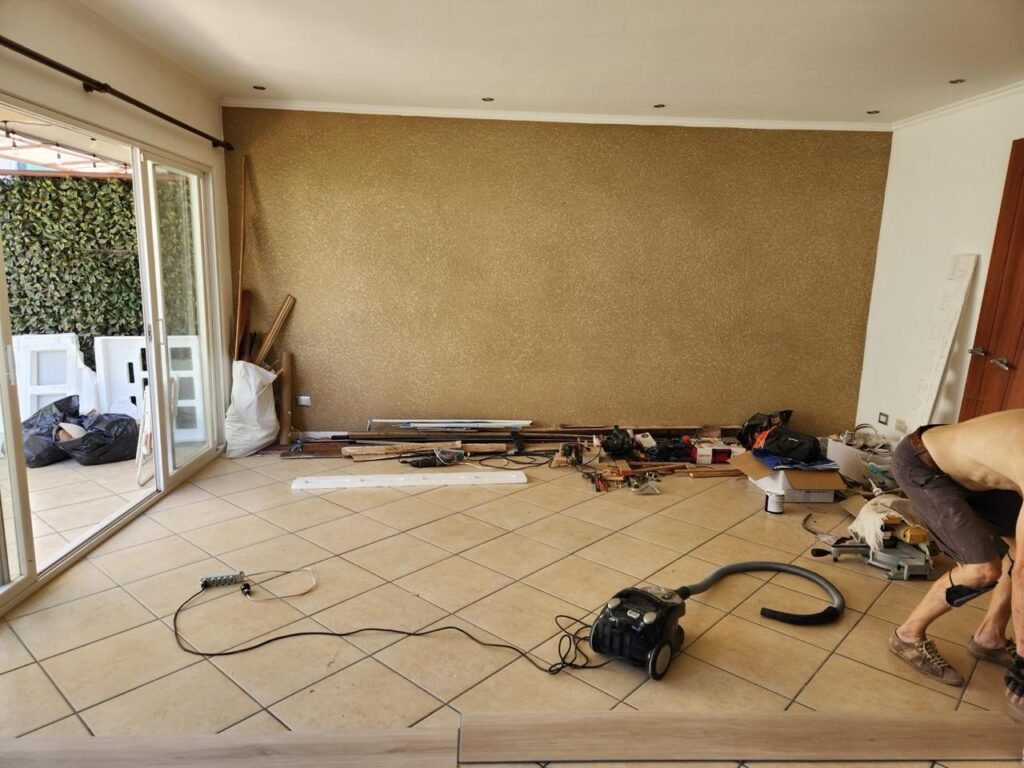
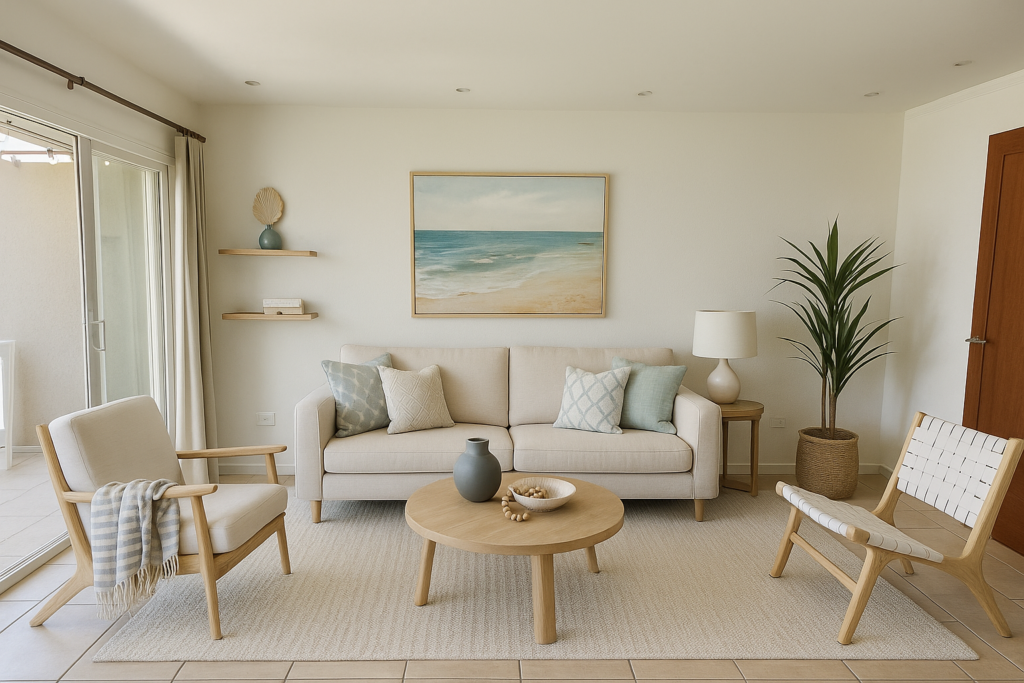
Homestyler – Floor Plans + 3D Decorator
This one is ideal if you’re moving, renovating, or just want a top-down view of your space. Homestyler allows you to create a 3D floor plan and experiment with furniture placement, wall colors, flooring, and more.
The AI component gives layout suggestions based on your inputs.
Best for:
- Planning a room from scratch
- Trying out multiple furniture combinations
- Adding decor from actual brands
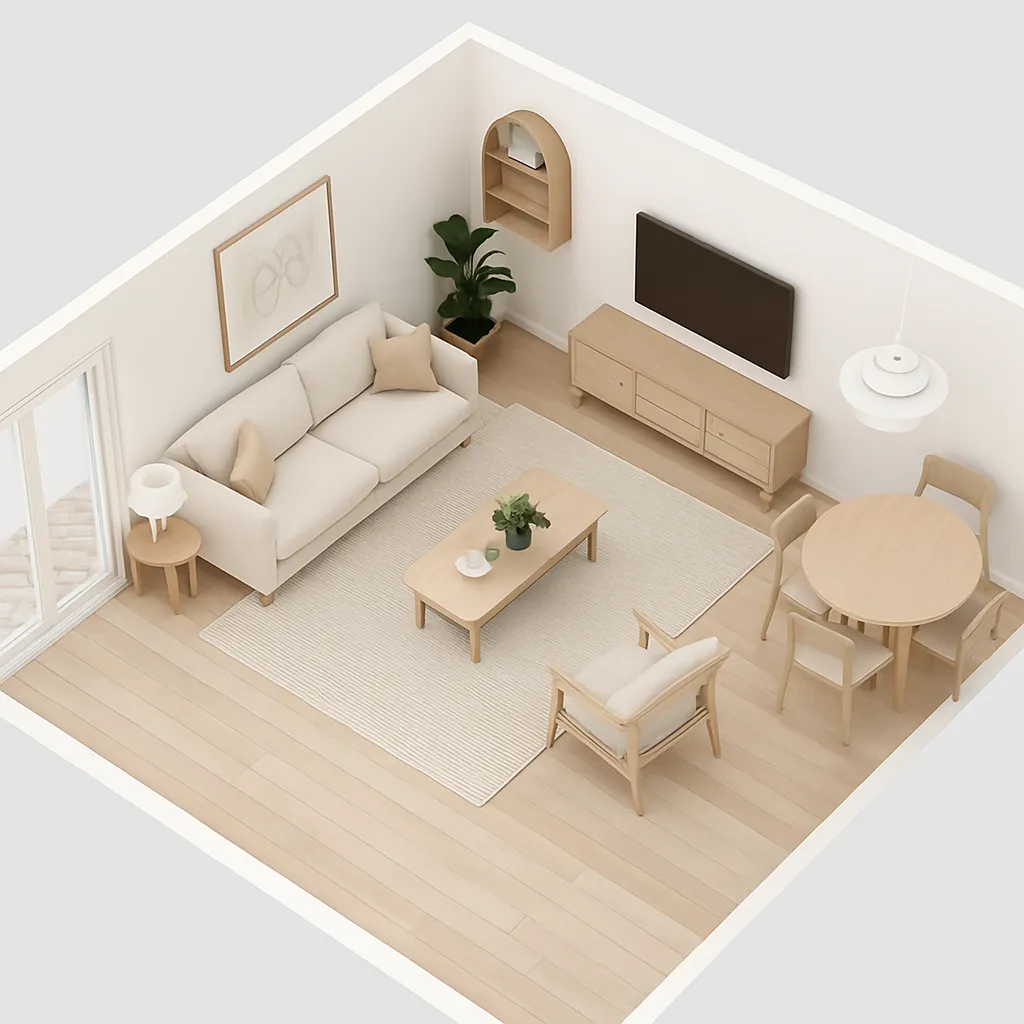
Decorilla – AI + Human Designer Hybrid
If you want something more high-end but still accessible, Decorilla blends AI recommendations with professional designer input.
You answer a few questions, upload photos, and the AI matches you with styles and layouts—then a designer steps in to polish the vision.
Why it’s worth trying:
- Feels more personalized
- You can work with real people when needed
- Perfect for large projects or if you’re indecisive like me
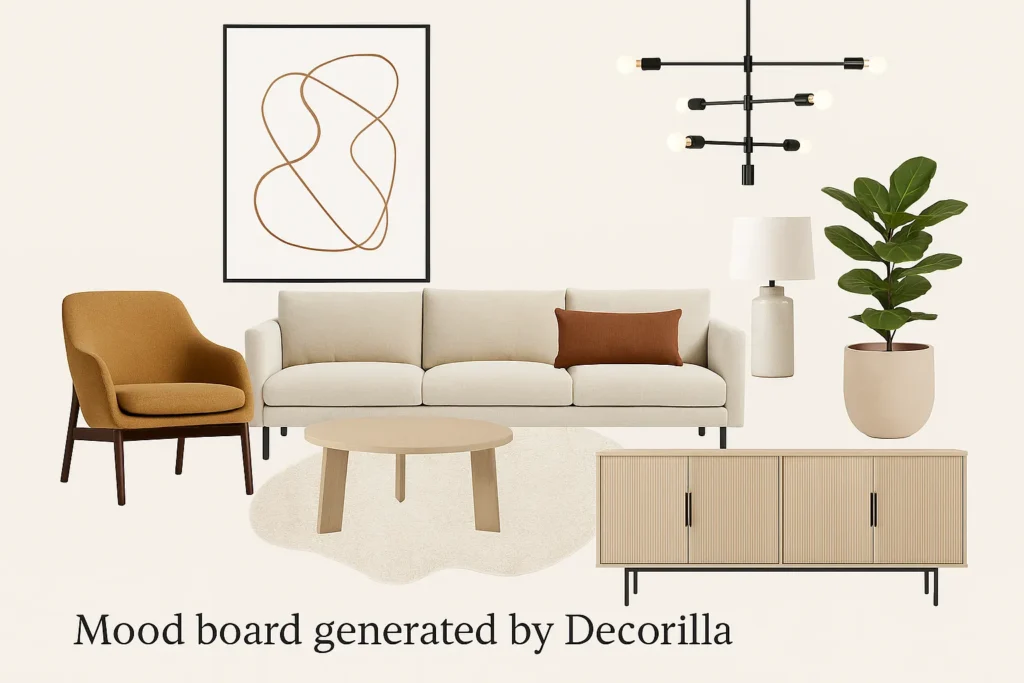
Bringing Boho Chic Into My Living Room with AI
If you know me, you know I’m all about spaces that feel warm, textured, and a little bit free-spirited. So when I decided to try AI interior design, I wasn’t looking for something ultra-minimal or super polished—I was dreaming of a Boho Chic transformation.
🌿 The Space Before
At the time, my living room was in full-blown renovation mode: bare floor, scattered tools, zero personality. I snapped a quick photo and uploaded it into an AI design tool—no styling, no filters, just the real deal.
🧡 The Boho Vision
After choosing the Boho Chic style from the tool’s options, I watched my space come alive. The transformation included:
- A neutral sofa with woven throw pillows
- Rattan chairs and a pouf
- A soft fringed rug
- Warm terracotta tones
- A leafy plant and earthy wall art
It was exactly what I didn’t know I needed—a space that felt relaxed, inspired, and personal.
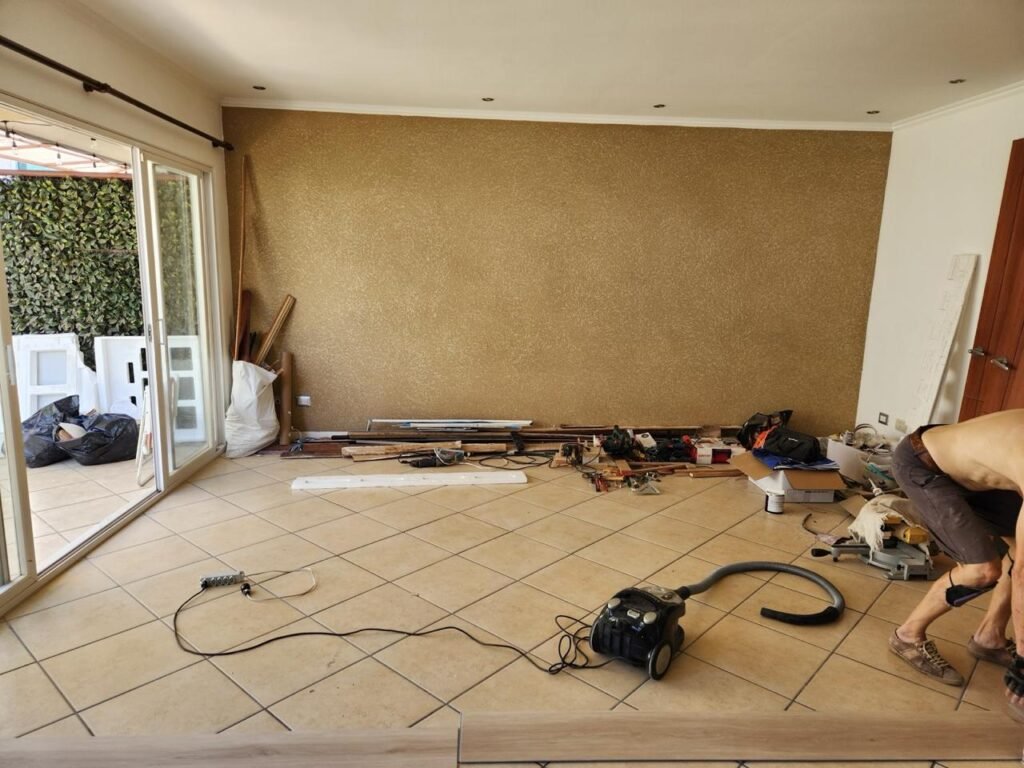
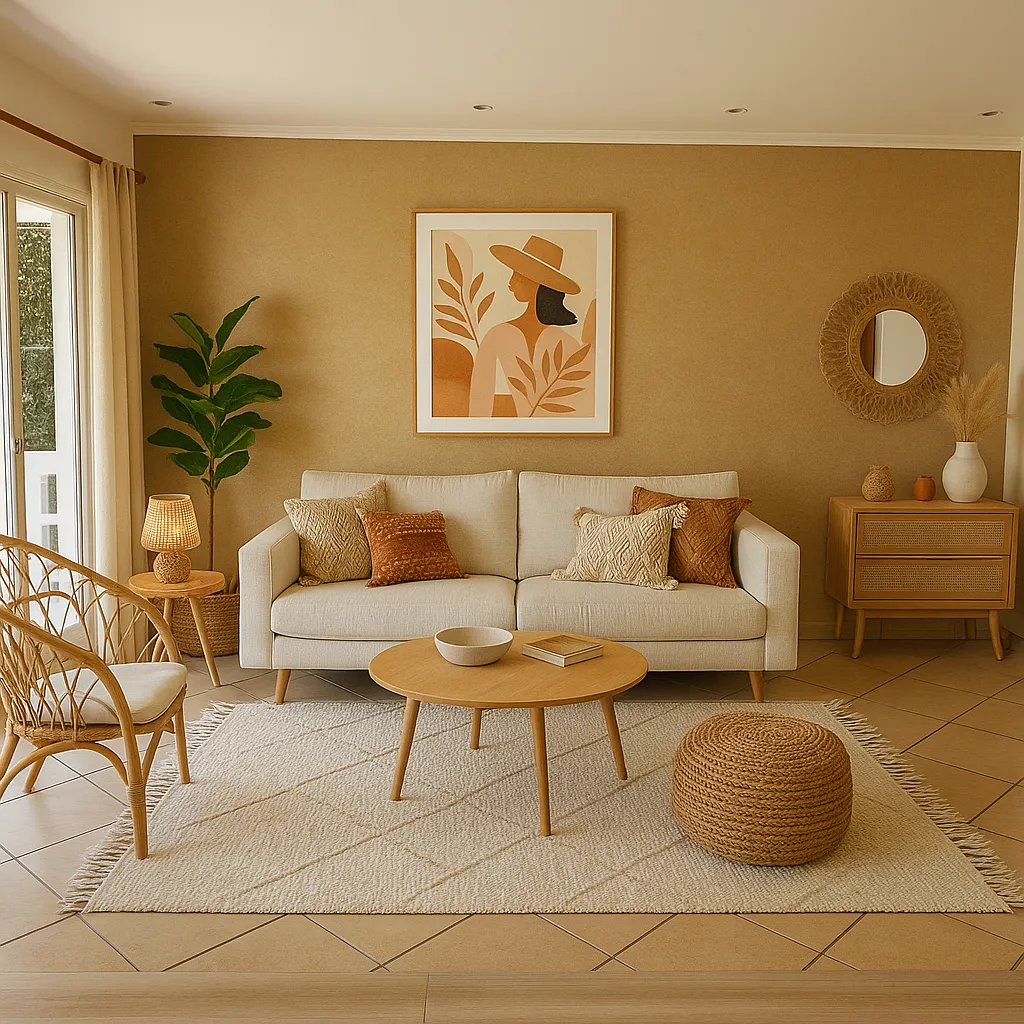
This cozy and artistic Boho Chic makeover was generated by AI using only a photo of my real space—no designer needed.
✨ What Made It Work
What I loved most wasn’t just the aesthetic. It was the way the AI helped me visualize a feeling. Boho style is about layers, soul, and creative freedom—and somehow, the tool captured that energy instantly.
And honestly? That saved me hours of second-guessing at the furniture store. a decorator on call—except it’s always available, doesn’t charge hourly, and responds in seconds.
Tips to Get the Most Out of AI Decor Tools
AI tools are amazing, but like any creative assistant, they work best when you know how to guide them. After trying out different platforms, styles, and rooms, I’ve picked up a few tricks that make a huge difference.
Whether you’re redecorating a single corner or your entire home, these tips will help you get better, more personalized AI-generated results every time.
🖼️ 1. Use High-Quality Photos
Start with a clear, well-lit photo of your space. Natural daylight is best. Avoid blurry angles or photos with a lot of clutter—what you give the AI is what it works with.
🪑 2. Know Your Style Vocabulary
If you know you love Boho, Minimalist, Scandinavian, or Rustic, use those words. Most tools respond better when you input a clear style direction. You can also combine styles like “Boho Modern” or “Scandinavian Farmhouse” for more nuanced results.
🧠 3. Let the AI Inspire—Not Decide
Treat the results like a mood board, not a rulebook. Use the designs to spark ideas and adapt them to your space, your budget, and your taste.
📋 4. Screenshot or Save Everything You Like
AI tools often don’t save your sessions, so if you love something—save it immediately! I have a folder full of layouts, mood boards, and style previews I refer back to whenever I shop or rearrange furniture.
🪵 5. Use It Alongside Pinterest or Canva
Pair AI results with your own Pinterest boards or build collages in Canva to refine the look. AI gives you the base, but you can layer in personal items and texture ideas for a richer final concept.
🧰 Bonus Tip: Try Multiple Tools
Don’t limit yourself to just one platform. I use RoomGPT for quick style swaps, Homestyler for floor plans and layouts, and Decorilla when I want something more curated and polished.
But here’s a secret: you can even use ChatGPT to generate mood boards, get design advice tailored to your room, and even create visualizations.
Just describe your space, your style, and what you’re imagining—and it can generate ideas, layouts, and even realistic images to help you plan your transformation.
It’s like having a design coach and virtual stylist in your back pocket.
What Can’t AI Do (Yet)?
As much as I love using AI interior design tools, they’re not magic. They can inspire and visualize, but they’re not a complete replacement for human intuition—or experience.
Here are a few things I’ve learned to keep in mind:
🚫 AI Can’t Feel the Room
AI doesn’t know how the sunlight hits your sofa at 4 p.m., or that the rug you love is sentimental. It can’t sense mood, energy flow, or how a space really feels to live in. That’s something only you can do.
🔁 Suggestions Aren’t Always Practical
Sometimes the AI will place a couch halfway through a sliding door or suggest lighting that doesn’t make sense for your ceiling height. Use your judgment and edit freely. If something feels off—it probably is.
🪞 Your Personality Still Matters
AI can suggest beautiful pieces, but it can’t express your story, your memories, or that quirky item you picked up while traveling. That soul—that layer of you—is what makes a house a home.
⚖️ Balance Is Key
The best results happen when you combine AI efficiency with human creativity. Let the tools speed up the process—but you make the final call. Always.
AI Interior Design – Frequently Asked Questions
To wrap things up, here are the most common questions people ask about AI interior design—perfect if you’re curious, skeptical, or just starting your AI decor journey.
❓ How do I use AI to decorate my home?
Start by taking a clear photo of your space. Upload it to an AI-powered tool like RoomGPT, Homestyler, or even ask ChatGPT for inspiration. Choose your preferred style (like minimalist, boho, or modern), and the AI will generate design suggestions based on your room’s layout.
❓ What is the best AI interior design app?
It depends on what you need:
- RoomGPT is great for fast style previews.
- Homestyler is perfect for planning layouts and 3D floor plans.
- Decorilla offers both AI suggestions and real designer input.
For personalized guidance and ideas, ChatGPT can also help you brainstorm and plan.
❓ Is AI interior design free?
Most tools offer free versions with limited features. RoomGPT, for example, lets you generate a few designs without payment. Others, like Decorilla, offer tiered pricing depending on how much customization you want.
❓ Can AI really help me decorate better?
Absolutely. While it won’t replace a professional for complex renovations, it’s perfect for experimenting with styles, visualizing layouts, and making quicker, more confident design decisions.
❓ Will AI replace interior designers?
No—and that’s a good thing. AI is a support tool, not a creative replacement. It helps speed up the process, but your taste, intuition, and lifestyle still matter most.
✨ Final Thought
If you’re curious about redesigning your space, don’t be afraid to try AI. It’s like having a virtual design assistant that’s always ready to help—and it might just surprise you with how creative you can be.
